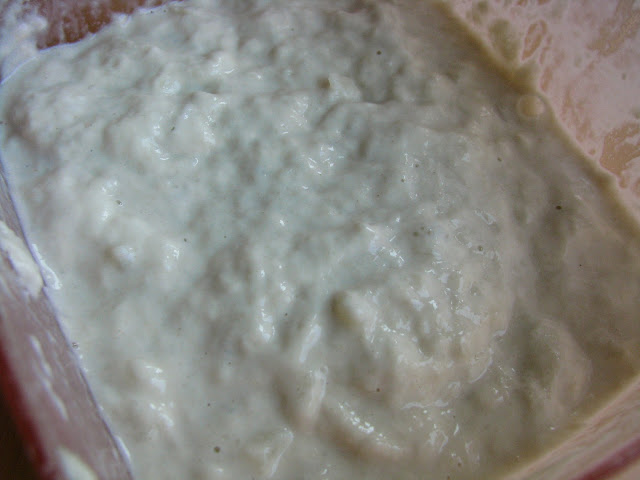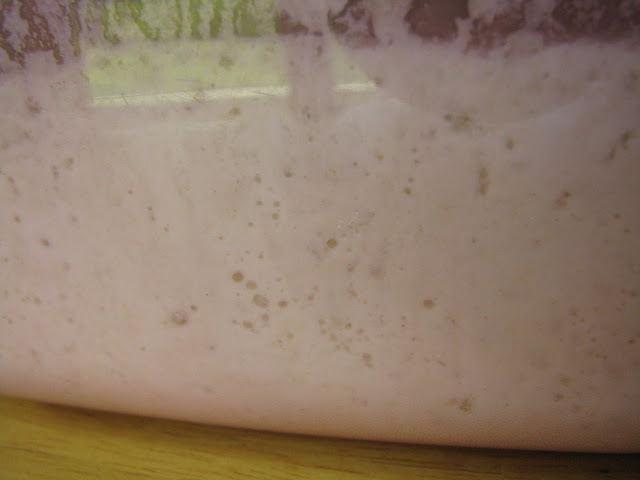Current Theme Song (aka what's playing on my ipod right now): Between by Vienna Teng.
The farmer's market is awesome, delicious, and as it turns out, a fantastic place to learn. It is full of bustling people all wanting the same thing (food). And there plenty of vendors offering some variation as the stall next door. There are green beans for $2.00 a lb at almost every stall. Sure, people gravitate toward the 1.00 lb for green beans, but price isn't everything. I was willing to pay top dollar for what I thought was the best of the market. It wasn't until my second trip back from this small wonderland paradise that I realized I was subconsciously absorbing what could easily be applied to authors, or any other kind of promotion. I was learning who the best sellers were and how they were accomplishing their jobs so well. From the street performers alone I learned a lot about how to present yourself and sell a product (any product, including you) effectively.
- Have fun, and let it show. And believe in yourself/your product enough to let it show. Among the performers with tin cans and instrument cases open hoping for a spare buck, I could tell in a heartbeat the ones who were confident or having fun. Even the performers who seemed like they were off in their own worlds had a strong appeal. Because they were into it, and were inviting you into their world, into something they thought was very cool. Now on the other hand you of course had the guilt factor, of things like small kids who were put up to it by their parents for who knows what reason. They didn't look like they were having fun, and it showed.
- Do something exceptional. Whether this was the cookie stand that was selling raspberry cookies (that were to die for) or the guy playing the didgeridoo. There was a guy there professionally sharpening knives. I saw people do straight up double takes, and conversations as we passed of people either remembering him or asking for a business card so they could bring their knives to him there or at their store later. There was also bicycle jewelry and non-dairy ice cream made with nuts instead (honest to goodness. And it tasted fantastic. I suppose this could also be said about something with free samples). There were candy cane beats were sold at only one stand and sold out within an hour of the market's opening. This applied equally well to blackberries. There were only three stands that sold them, and the one that offered the most for the lowest price was sold out by the time I walked that way again. These places, the unique ones, the ones I thought offered something special, those are the ones I remember, and the ones I'll be going back to.
- Give the people what they want. Corn. Dude, the first people to sell corn before anyone else's harvest was sold out faster than you could blink.
- Be personable, and be yourself. There was this honey guy. Now he wasn't the only honey guy there, but trust me, he was THE honey guy. He never seemed to be short of people (neither was it ever crowded, interestingly enough. Kind of like Goldilocks). He was the most open and friendly man at the market. I asked question after question and he answered them all without a hint of anything but patience and generosity. And being a writer, you know I asked some mighty weird questions.
Some people in the market called out like old fashioned bazaars, but it wasn't really very effective. If anything, it made me want to hedge away for fear that if I made eye contact they would reel me in like a fish with no way to extricate myself nicely. This guy called out like the rest of them, but his approach was completely different. I swear, he sounded just like Sam selling his onions from the book Holes. "Honey! We've got the good stuff here, folks. Try our honey butter!"
Notice he didn't say it was the most amazing honey on the planet. Such a large claim is a tough order to fill, and often sounds like hyperbolized boasting. He said it was the good stuff, and let that be the draw, and it sounded like just enough of a truth to dare me on. And then here is the most important part… He let the product speak for itself. And oh my goodness, it was good. You could tell from other people's reactions to that little squirt of honey honey butter on a cracker that he wasn't lying. That proof of what he was claiming was genuine, that was genesis word of mouth, because it wasn't something he could generate on his own. That is the most important part. Sure, he was able to draw me in, but in the end, the product he was offering was what was real, and that is what sold me. You have to believe in your story/product enough to let it stand on its own.
He also was never condescending of inquisitive people who just came for a sample and left. He offered it freely all the same, and it was that openness that made him both memorable (and approachable). Maybe they didn't have time, or money to buy it then. Or maybe they didn't like honey, but they thought they would try it for a friend of theirs. Did his open manner help? You bet it did, because I recommended him to at least two people telling them they specifically had to buy from him and no one else. You make an impression no matter what, so make sure you're remembered for all the good reasons.
- Offer something different. There were a couple coffee stands, but only one of them looked like an iron train car and had tables in the shade. There were almost a dozen musicians, but only one harpist, and only one bohemian band. And of course the rocking didgeridoo guy.
- Appearances matter. Look professional and you will seem more professional. There was a small group at a tiny table under a tree offering to write free customized poems (and perhaps even were accepting donations for something important) but because they were on a tiny table with only "Free Poems" handwritten on a piece of small poster board, I didn't know anything about them or their purpose. So I didn't approach. People that looked down or seemed predatory I also kept away from. Again, refer to the first observation about the performers doing something so absorbing and cool that they are drawn to you. Like, how could you be so into something and have it *not* be awesome? Invite them in instead of invade.
- Be your own kind of different. In other words be you. On leaving the farmer's market I stopped at one last stand and picked up a "gourmet" popsicle with both strawberry and basil inside. It was really quite good. They sold popsicles, and they knew it, and were proud to of it. They owned it. And it was something you could just tell. So whether you are comfortable creating sketches in the margins of your books for your readers quietly and meticulously, creating a strong web presence, or even just a website, make it yours. My mom is a talker and can approach complete strangers in a grocery store. That gene skipped me (in a big way). But I have a deeply creative side that I love to show. Play to your strengths. Make the things you love work for *you*. You do not want to be the performers where you can tell they are having no fun. Because you can tell those ones, very very easily. And it will translate to your product. If you don't believe in yourself, then how can be what you are selling be any good either?
Now go out, go forth, and sell your honey!





























































